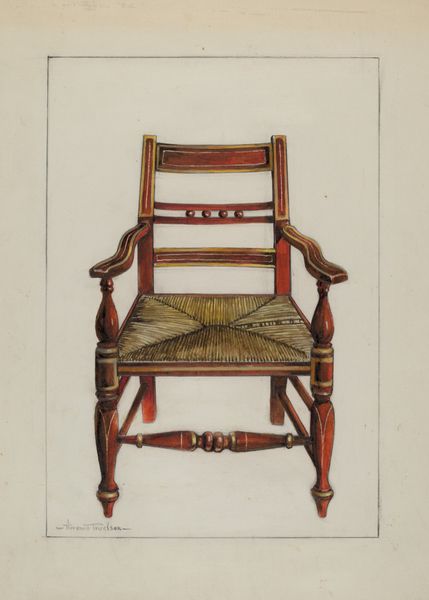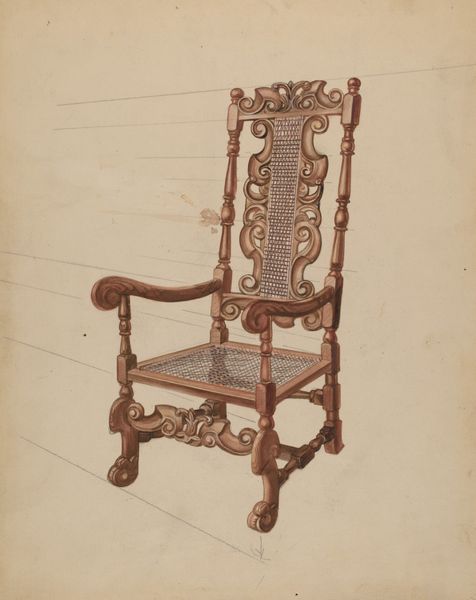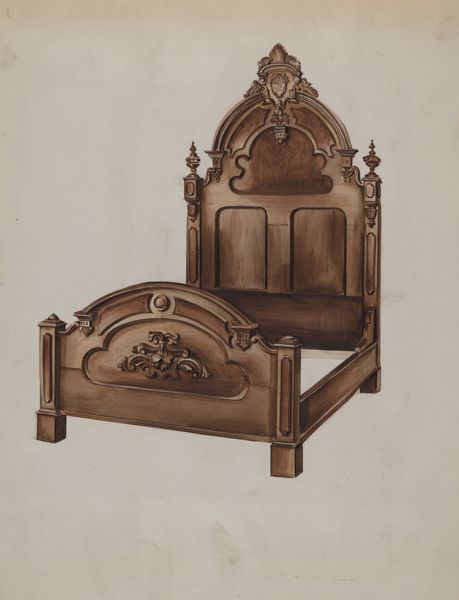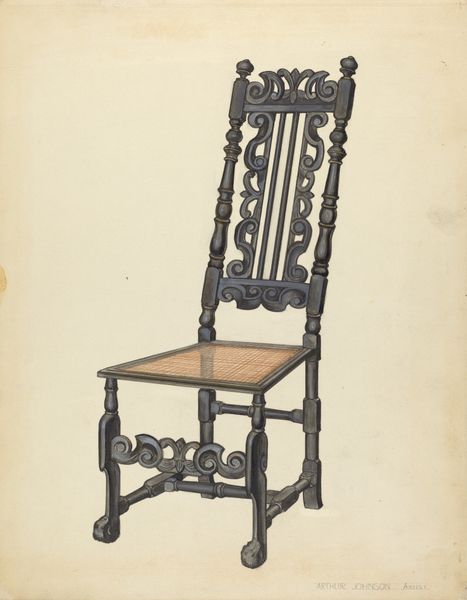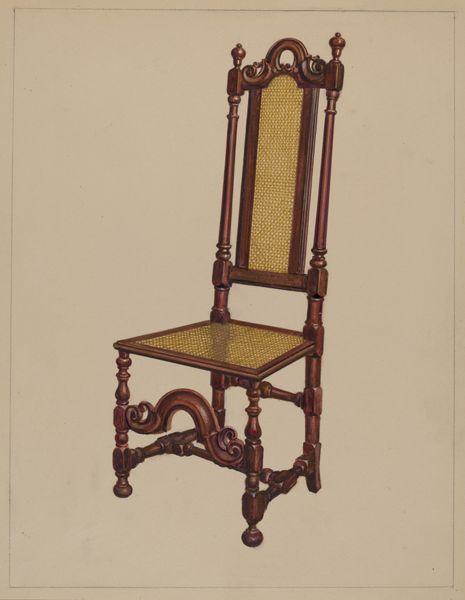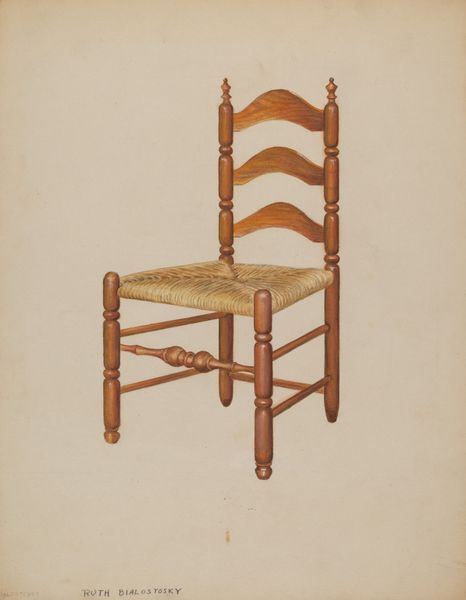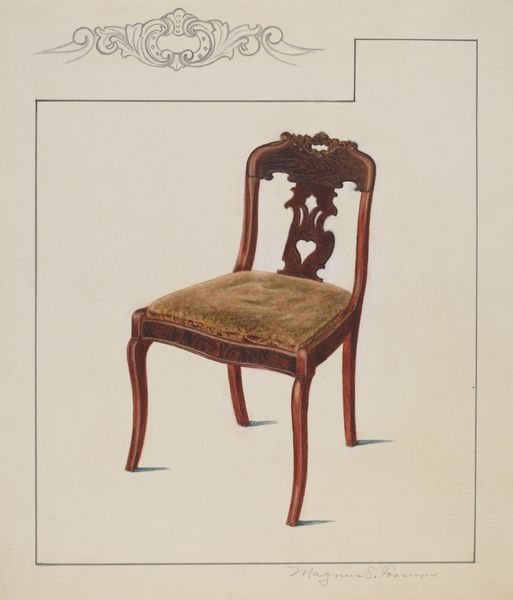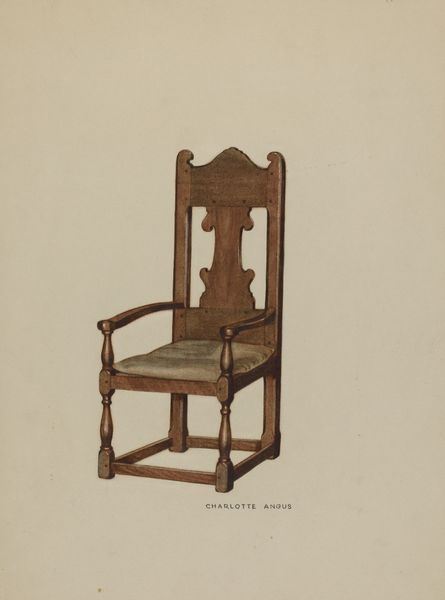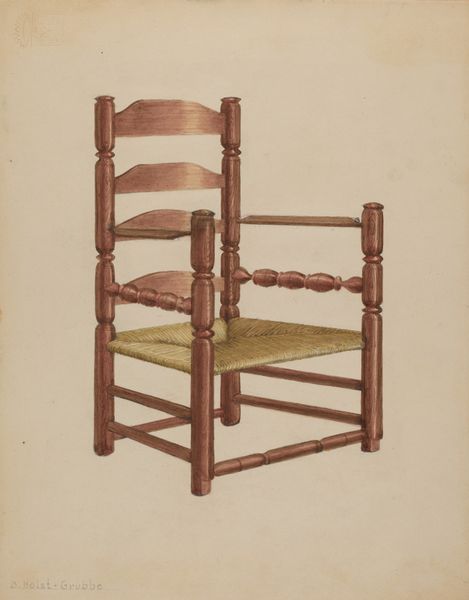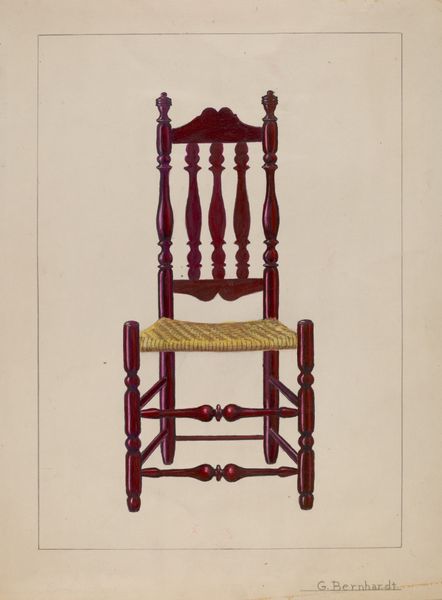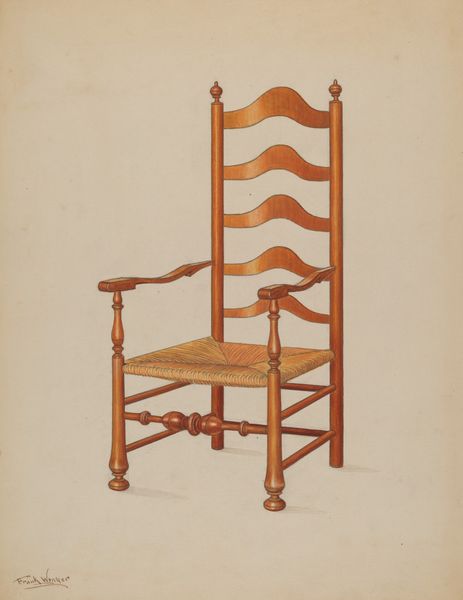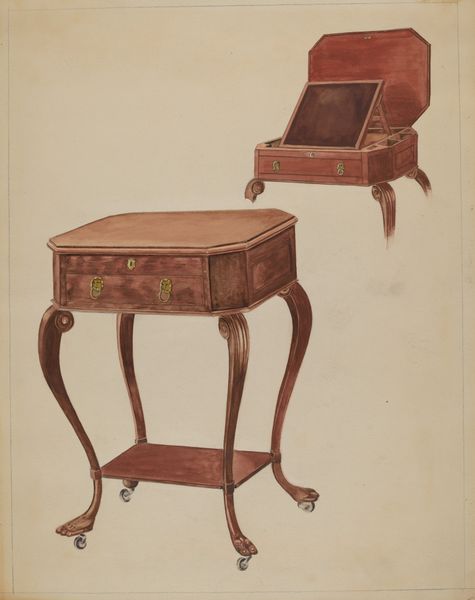
drawing, coloured-pencil, watercolor
#
drawing
#
coloured-pencil
#
watercolor
#
coloured pencil
#
realism
Dimensions: overall: 35.5 x 25.8 cm (14 x 10 3/16 in.) Original IAD Object: none given
Copyright: National Gallery of Art: CC0 1.0
Curator: This watercolor and coloured-pencil drawing, entitled “Chair,” dates to around 1936, and the hand behind it is that of George Kirschner. It seems pretty straightforward as far as depictions go, wouldn't you say? Editor: At first glance, I thought it was a rather grand throne, the kind you’d find in a serious Victorian novel! But there's something undeniably forlorn about the chair, perhaps it's the stark presentation. It lacks context; it's just this...empty vessel. Curator: I see what you mean. What's striking to me is the almost forensic detailing; it's an intense study in material and joinery. The way Kirschner rendered the wood grain, and the little foot caps… it speaks to the value placed on craft and industry at the time. I bet this was meant as an aspiration, not an affectation. Editor: It's almost scientific. He meticulously shows us how it’s constructed. A diagram almost. Perhaps it’s a commentary on mass production versus skilled handcraftsmanship. Do you think it’s a commentary or simply just for information? Curator: Well, during the 1930s there was this fascinating tension between industrial production and handcrafted goods. So maybe Kirschner is saying something about this chair’s role in either camp? Like, is it a status symbol? And who is likely to own something like that? I agree that he invites us to consider the work involved to make it and maybe even to appreciate the thing itself. It could well be. It might have a deeper meaning. Editor: Indeed! And Kirschner has cleverly, perhaps, transformed a mundane subject matter—a simple chair—into an object of curiosity. Makes me wish I had the space in my flat for something as unique as this. So much artistry on a page devoted to everyday utilitarianism. Curator: Absolutely. I came away from considering this piece admiring Kirschner’s artistry but also with an appreciation for the unseen labor embedded in the chair. Editor: I leave, also appreciating what it says about domesticity of that period, too. Makes me think that objects that surround us have such profound impact on our psychology. And perhaps, that goes both ways. We give that chair its presence, its reason.
Comments
No comments
Be the first to comment and join the conversation on the ultimate creative platform.
